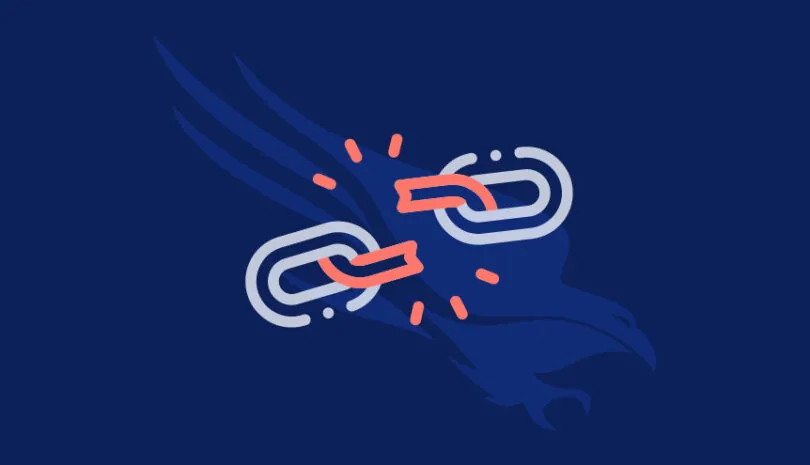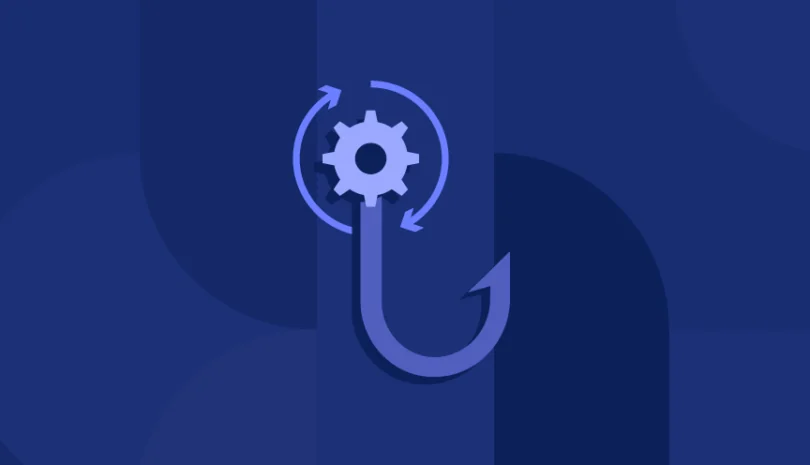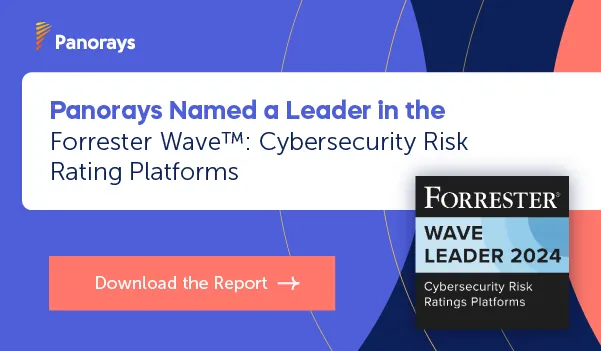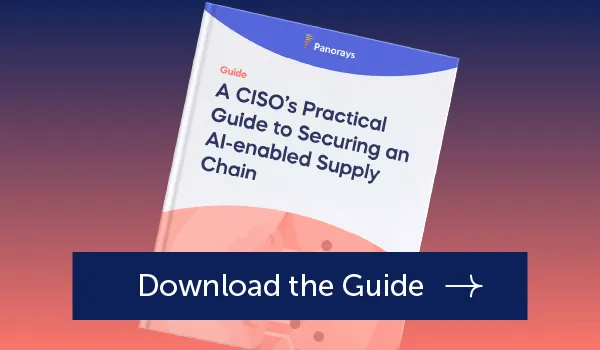Third-party breaches from high-profile companies such as T-Mobile, Kaseya and SolarWinds have exposed the confidential and sensitive information of millions of customers and organizations. With 60% of organizations currently working with more than 1,000 third parties, organizations have stepped up both their vulnerability management and attack surface management to better defend themselves against these attacks. Let’s explore the difference between the two approaches and why your organization ultimately needs both for maximum protection against cybersecurity attacks.
What is Vulnerability Management (VM)?
Vulnerability management is the systems and processes that both identify and prioritize the different weaknesses inherent in your attack surface that connect to external tools and could be exploited by malicious actors. Examples of vulnerability management typically include network scanning, firewall logging, penetration testing, network scan analysis, patching software vulnerabilities and prioritizing them according to the level of threat they pose to your organization. Vulnerability management requires a fair amount of collaboration between teams to gain access to passwords, codes of the organization’s internal networks and IT infrastructure to conduct a thorough assessment of vulnerabilities.
The 4 Main Stages of Vulnerability Management
Since organizations often encounter too many vulnerabilities for their team to manage manually, vulnerability management tools exist to identify, evaluate and mitigate weaknesses in your organization’s assets, applications and systems. For example, internal vulnerability management tools can identify weaknesses in a firewall or router.
These tools typically break down vulnerability management into the same basic steps:
1. Vulnerability Scanning
The first step involves scanning your network and systems for known vulnerabilities of assets. It may also include asset discovery, or understanding which hardware, software, network and other components exist in your IT infrastructure. These scans can be automated and scheduled at regular intervals to stay ahead of emerging threats.
2. Assessment and Prioritization
Vulnerability management includes a prioritization process to address the most critical vulnerabilities first, reducing the risk of exploitation. Some, such as Known Exploited Vulnerabilities, or KVEs, have their own system of categorization while others need to be prioritized internally.
3. Mitigation and Remediation
Once vulnerabilities are identified and prioritized, the next step is remediation. This can involve patching systems, reconfiguring settings, updating software, or implementing security controls to mitigate risks. It is also important to verify remediation afterwards to evaluate the effectiveness of your fix. Patch testing, for example, can determine whether any new security issues arise as a result of the new patch.
4. Reporting
Effective vulnerability management includes clear and concise reporting to track progress, demonstrate compliance, and demonstrate compliance. From these reports, you may have insights into how to act to prevent or mitigate future attacks and enhance your overall cybersecurity posture.
The Challenges of Vulnerability Management
When organizations don’t have an effective process in place for their vulnerability management they may face consequences such as data breaches and cybersecurity attacks. But even when they do, vulnerability teams generally face a number of challenges.
- Requires intensive collaboration with the internal team. When vulnerability management is executed by an external party outside of the organization, it can be difficult to achieve the level of trust necessary to conduct thorough assessments.
- It doesn’t identify third-party risk. Since vulnerability assessments are typically limited to your organizations’ attack surface, they don’t include third or fourth party vendors – and they aren’t supposed to. As a result, vendor management is one of the most challenging aspects of vulnerability management since third and nth-party vendors are part of an extended attack surface that pose significant risk to enterprises.
- Can be difficult to prioritize. With organizations having to deal with hundreds or thousands of vulnerabilities at any point in time, it can be quite challenging to prioritize them according to the level of risk facing your organization. Many are only classified in a basic way, such as the number of vulnerabilities, area affected, or level of severity.
- Longer reaction times. Due to the difficulty in classifying vulnerabilities, it can take longer to understand how to mitigate them. In addition, when vulnerability management is not on the same timeline as the software patching process, it results in a delay in patch management.
- A non-linear process. Vulnerability management is difficult to conduct continuously, as attack surfaces are dynamic. It is also more intrusive and can disrupt operations. A classic example is penetration testing, which is conducted several times a year for organizations at best, while the network and systems of an organization generally evolve on a more regular frequency. Since it is disruptive, penetration testing also often requires scheduled downtime.
What is Attack Surface Management (ASM)?
In contrast to vulnerability management, attack surface management is the process of continuously monitoring your attack surface, including discovering externally-visible assets, patching vulnerabilities, and prioritizing and alerting your organization of any vulnerabilities that place you at high risk of an attack. It focuses on weaknesses in an organization’s external attack surface from the perspective of a hacker rather than a defender.
Unlike vulnerability management, attack surface management involves continuous monitoring of the attack surface to defend in advance against attacks on your organization.
As many companies leverage attack surface assessment tools to reveal supplier vulnerabilities, it is increasingly common to view ASM as a way to see your organization from a customer’s perspective.
The 4 Main Stages of Attack Surface Management
This continuous monitoring and visibility of your evolving digital footprint enables an ongoing evaluation of your organization’s security posture. ASM helps to reduce the complexity of your attack surface and strengthen its defense.
The ASM process includes the following stages:
1. Asset Discovery
Attack surface monitoring can include the asset discovery of known, unknown, malicious and rogue assets. In advanced attack surface monitoring solutions such as Panorays, it can also assess your organization’s third-party assets. This can also include mapping out the entire attack surface to visualize the points of entry that cybercriminals might exploit and help security professionals prioritize their defenses.
2. Prioritization
Prioritization can include risk scoring or other rating that classifies the risks posed by any particular asset to your organization. By focusing first on high and critical risks to your organization, you’ll deliver faster remediation as well.
3. Remediation
Remediation might include implementing broad policies of multi-factor authentication or other security controls throughout the organization, retiring orphaned domains or identifying any third-party assets that could pose risk to your organization.
4. Monitoring
The continuous expansion of the attack surface means that your attack surface management must include the detection of third-party software, vulnerabilities, misconfigurations, compliance issues and more to detect evolving risks as early as possible. Continuous monitoring also ensures that remediation efforts are effective.
How Organizations Can Reduce Their Attack Surface
Since attack surface management is concerned with reducing the number of entry points attackers can use to exploit vulnerabilities, it’s often considered more proactive than vulnerability management, which only identifies and mitigates against existing vulnerabilities. However, a holistic approach is necessary to optimize your cybersecurity strategy and strengthen your overall security posture.
With the continuous expansion of attack surfaces, many organizations turn to attack surface management solutions. Regardless of the solution you use, your organization can take basic steps to minimize its attack surface.
These include:
- Minimizing public-facing assets. According to Randori, a subsidiary of IBM, 69% of organizations suffered an attack from an unknown, unmanaged, or poorly managed internet-facing asset last year. Minimizing them decreases the risk of an attacker using them as an entry source to gain access to sensitive data.
- Implementing regular patch management. A vulnerability patch process will enable your security team to need to secure hundreds and thousands of vulnerabilities as the organization scales.
- Applying the principle of least privilege. Limiting access to networks and systems to only the most necessary users, minimizes the possibility of unauthorized users gaining access to confidential or sensitive data.
- Limiting endpoints. Have a policy regarding BYOD to reduce the possibility of attackers using employee desktops, mobile devices, laptops and IoT devices as entry points. Minimize the number of non-essential services running as well as mobile apps and web applications.
How ASM and Vulnerability Management are Essential Allies
Vulnerability management is more narrow and limited in its scope, but attack surface management is broader, giving security teams a more comprehensive view of their internal IT infrastructure and external assets. ASM delivers valuable insights to the vulnerability management team about which assets are most likely to be targeted and how they connect with one another so that they can prioritize their efforts accordingly. Vulnerability management helps assure the security team that current vulnerabilities in the IT infrastructure are being addressed. Working together, they help deliver a comprehensive cybersecurity strategy to help guard against future cyberattacks.
How Panorays Helps Protect Your External Attack Surface
Although ASM provides a broader defense to your security team, most attack surface management solutions aren’t able to provide details regarding your organization’s extended attack surface. The extended attack surface assessment gives you a Cyber Posture Rating so that you gain a full understanding of the risk posed not only to your organization’s attack surface, but to your vendor’s attack surface as well.
Panorays in-depth attack surface discovery includes Asset Details, an added layer of attack surface visibility to discover and defend against all internet-facing assets. Its Supply Chain Discovery automatically discovers third, fourth and nth-parties in your extended supply chain so that you can identify shadow IT assets and understand how these connections impact your risk. Finally, the Risk Insights and Response Portal alerts you to any third-party attacks or breaches, and comprehensive security questionnaires sent to only the relevant parties give you the context for how they impact your supply chain. With this information in hand, you can then improve your supplier’s security, delivering them a customized plan that prioritizes remediation according to your organization’s risk appetite.
Get started with a Free Account today to gain full visibility into your entire digital supply chain and better defend against your third-party cyber risks.
FAQs
-
The main difference between ASM and vulnerability management is that ASM evaluates weaknesses and the ability of hackers to exploit from the outside – your digital perimeter – whereas vulnerability management looks at the internal weaknesses in your organization and how a hacker could exploit them. Vulnerability management helps to defend against current threats, while ASM seeks to guard against future threats. Together they can deliver your organization a more comprehensive cybersecurity strategy.
-
Vulnerability management is the process that identifies, prioritizes and mitigates against malicious actors seeking to exploit internal weaknesses in an organization’s network or system. It is a subset of attack surface management, as it addresses weaknesses that have already been discovered within your IT infrastructure and seeks to mitigate them. It is an important approach to defending against current risks to your organization.
-
Attack surface reduction is the process of minimizing the entry points an attack could use to gain unauthorized access to confidential or sensitive information. Organizations can take steps to reduce their attack surface that include minimizing code, implementing regular patch management, applying the principle of least privilege (POLP), segmenting the network and limiting endpoints.






